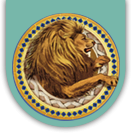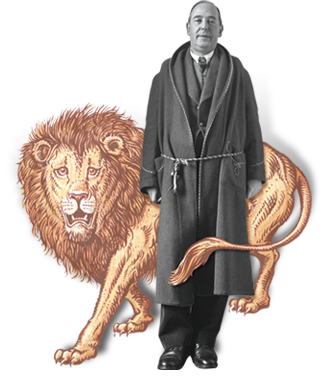Did Lewis & Tolkien Plan to Write Together?
Did C.S. Lewis and J.R.R. Tolkien collaborate on a project that was never published? It is well known that the two were close friends and relished each other’s praise and criticism. However, there is little evidence that the two intended on working together on any manuscript. Steven A. Beebe, professor and chair of communication studies at Texas State University, believes he has found a fragment of an unpublished work. CSLewis.com recently interviewed Dr. Beebe to get more insight on his findings.
CSLewis.com: How did you come across the previously undiscovered “fragment” in the Oxford Library?
Steven Beebe: I was reading C. S. Lewis manuscripts in the Bodleian Library during the spring and summer of 2002 while I was on sabbatical from Texas State University-San Marcos. I was interested in what I could learn about Lewis by reading his original, handwritten manuscripts. I was specifically looking for things such as what he may have crossed out, or what I could learn by observing his editing of his own work. At the beginning of a little orange-covered notebook I read the words, “In a book like this it might be expected that we should begin with the origins of language…” and realized that I was reading a book manuscript about language. As a professor of communication, I knew immediately that his ideas about language and communication were important. But what I didn’t realize at the time was that this was to have been the beginning of a collaborative book with J. R. R. Tolkien. That took another seven years for me to figure out – that the manuscript I was reading was supposed to be a collaboration between Lewis and Tolkien.
CSL.com: What made you know you had found something so unique?
SB: Because Lewis’s handwriting is sometimes difficult to read, I began doing research to see where I could find the manuscript in print. Much to my surprise, I couldn’t find it in print. And I realized that this was a manuscript that most people had not yet read. Walter Hooper makes a brief reference to the manuscript about language in his excellent book Past Watchful Dragons, yet I could not find where anyone had transcribed the manuscript. So I began the meticulous task of transcribing the manuscript—copying every word, punctuation mark, and noting his edits as well. As I delved into what he had written I was amazed and impressed at both the clarity of his ideas as well as his depth of expression about language, meaning and communication.
CSL.com: How does Tolkien play into it, since it is my understanding from the press release that there is no indication he started work on the project? Is that more a theory even given the “we” and “authors” indications?
SB: It was only this year that I realized that while doing my laundry at a local laundromat in San Marcos, Tex., that I made the connection that the manuscript I had found in 2002 was the beginning of a book that Lewis had planned to write with Tolkien. I was doing research about Tolkien and Lewis and read about their planned book and began reading all I could find about their planned project. As I was reading the description of their planned book, I immediately realized that Lewis did indeed begin the book — it was the manuscript that I had transcribed. (I was with my wife and we were both reading silently in the Laundromat when I excitedly burst out with “I know what it is!” My wife said, “What what is?” And I said: “I know what the Lewis manuscript is!”) There were many scholars who concluded that the book was never started and certainly never written. Clearly the book was never published. There is no evidence that Tolkien started work on the project. In a 1944 letter Tolkien wrote to his son, Christopher, about the collaborative Lewis/Tolkien book project, J.R.R. Tolkien laments that he doubted he’d have the time to work on all of the projects he had planned including the planned book with C. S. Lewis. I surmise that although Tolkien would have liked to have written the book, he simply was too busy working on Lord of the Rings and other projects to work on the collaborative Lewis/Tolkien project.
CSL.com: Can you provide one of the statements about language that Lewis writes?
SB: Since the work is under copyright protection, I’m not permitted to provide extensive quotations from the book. In the article that is planned for publication next year in the journal Seven I’ve included the entire text of the manuscript. The journal is working with the Lewis literary estate to secure permission to publish the work. I can describe the content of what the manuscript includes. It opens with an overview of what the book will be about: A description of the nature and origins of language. Lewis then develops an interesting definition of language, a definition I’ve not seen in any of his other published works. He then presents a discussion of the nature of meaning, including how we develop meaning from language. Again, I’ve not seen this discussion about the nature of meaning included in any of his published work.
CSL.com: Is this a rare find or do you feel there are other writings of Lewis still scattered about? I know that he was an avid communicator via postal letters, for example. Is there more work left undiscovered?
SB: I would be surprised if there are complete new manuscripts that would surface, or even large chunks of manuscript fragments that would be found. Lewis often discarded manuscripts, especially early manuscripts he had written. The existing manuscripts that are in the Bodleian Library in Oxford and the Wade Center in Wheaton, Illinois, have been cataloged and reviewed by many others. The manuscript I found was in a well-known notebook but had simply been overlooked, I believe, because of the interest in two other manuscript fragments that appear in the notebook, two early drafts of the Narnia Chronicles. Specifically, an early draft of a portion of The Magician’s Nephew as well as The Voyage of the Dawn Treader. The text of both of these fragments appear in Walter Hooper’s book Past Watchful Dragons. Although it’s certainly possible that new manuscripts may surface, it seems unlikely. Because Lewis was a consummate letter writer, it’s more likely that new letters may surface that include new insights or information, but his manuscripts have been identified and cataloged by both Wade Center and Bodleian librarians.
CSL.com: Tell me a little about the article that is scheduled to be released about your findings and where folks can find it?
SB: The article, to be published in the journal SEVEN a year from now, opens by noting that Lewis and Tolkien had plans to write a book together. There are references to the book in letters by both Tolkien and Lewis. The article then presents the arguments as to why I believe the manuscript is the beginning of the hoped for collaboration between these two writers. The topic of the manuscript, the estimated date of the manuscript, as well as Lewis writing which indicates it’s a multiple authored work (he says “authors consider” and “we believe” rather than “author considers” or “I believe.”). The bulk of the article incorporates the manuscript fragment with commentary as to how Lewis’s ideas about language and meaning included in the manuscript amplify ideas he has written in other published works. Lewis was keenly interested in language and meaning in several of his works (e.g., Studies in Words, “Before We Can Communicate,” “The Language of Religion).
CSL.com: One last question related to the Lewis class you teach at Texas State University. You name Lewis as a “Master Communicator.” Why you do you describe Lewis this way?
SB: I’m currently working on a book in which I describe Lewis’s principles and practices that make him an especially effective communicator. Lewis knew how to connect with people both when speaking and writing. He was audience-centered; he wrote for both “the eye and the ear”—his prose had an oral quality about it that made it seems like he was talking to you. I think that’s why so many people wrote to him; after reading his essays and books people felt like that needed to participate in the conversation that Lewis had started, so the wrote to him and he wrote back. Lewis loved conversation as evidenced by his many years participating in The Inklings literary discussion group. His tutorial teaching style as well as his skill in using radio also enhance his reputation as a master communicator. In the book I’m writing I describe Lewis’s key assumptions about human communication and then identify the various communication techniques that he used to make him among the most widely read authors of the twentieth century. Lewis knew how to connect to people through words; he was a master communicator whose words still help people make sense out of their world in most meaningful ways.


